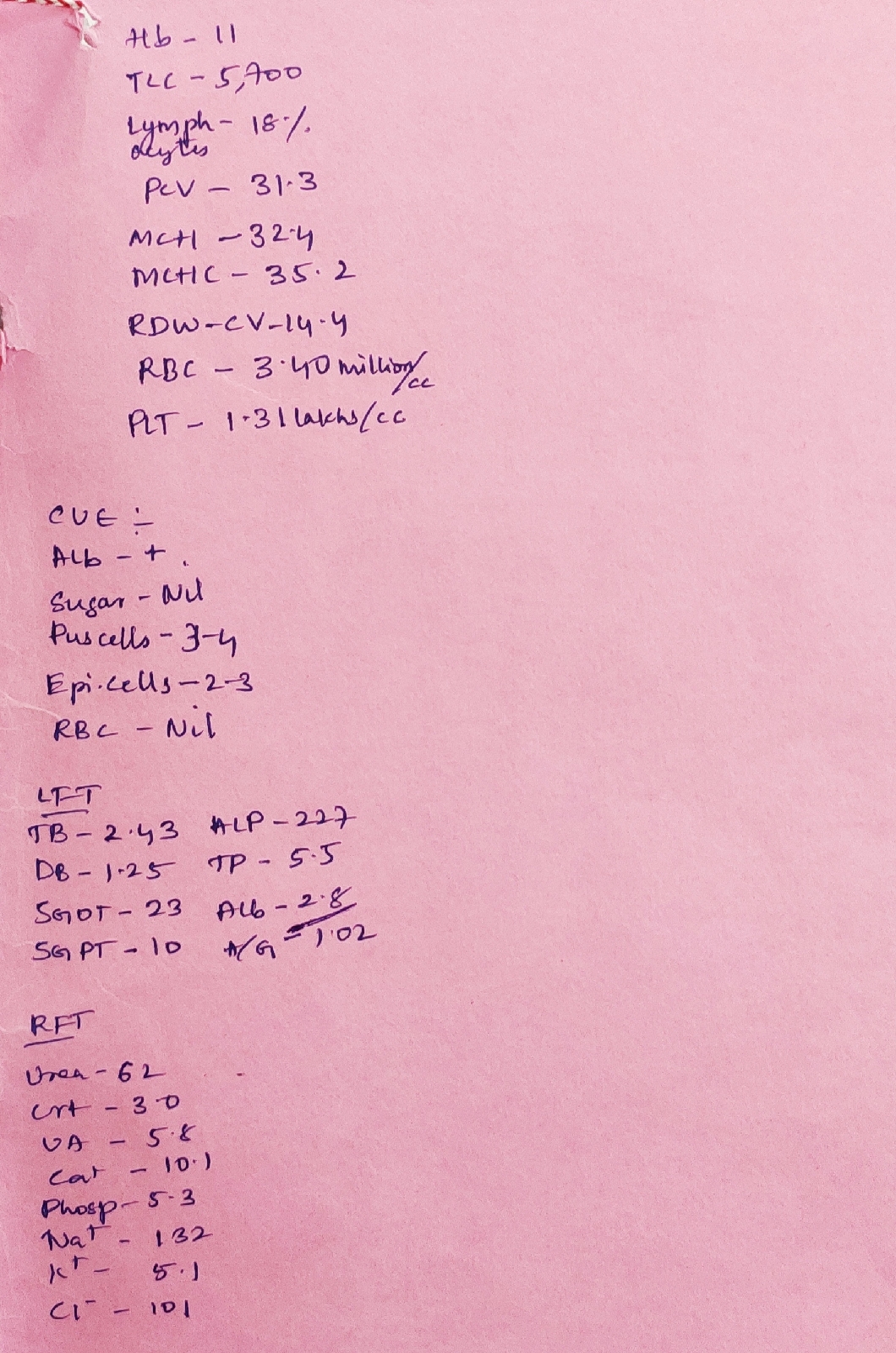Bimonthly assessment(october)
CASE 1
https://swathibogari158.blogspot.com/2020/09/chronic-decompensated-liver-disease.html
1) Reason for this patients ascites
The most common cause of Ascites is
Cirrhosis of liver
risk factors in this patient :
1. Chronic alcoholism since 40 years
2. Truncal obesity leading to metabolic syndrome causing NAFLD leading to cirrhosis
ulcerations are due his limited self practising manoeuvres done in inappropriate conditions such as
improper dressing of the wound, not maintaining aseptic conditions , indescriminate use of steroids (self medication) to quote from history (Patient attenders were giving history of multiple self medications whenever patient developed fever or shortness of breath they used to take decadron injections, larigo tablets,monocef and pantop over 4 months intermittently ) causing ? immune suppression leading to secondary infections hence cellulitis and non healing of wound.
In hepatic encephalopathy (due to cirrhosis of liver ) damage occurs to brain cells due to the impaired metabolism of ammonia is predominantly related to the development of asterixis in hepatic encephalopathy.
Salt restriction <2.4gms/day to prevent retention of water due to osmotic gradient as sodium causes retention
3. Inj augmentin 1.2gm IV/BD to prevent secondary bacterial infections
4. Inj pan 40 mg IV/OD
5. Inj zofer 4mg IV/BD
6. Tab lasilactone (20/50)mg BD ( combination of furosemide and aldactone to decrease pedal oedema
If SBP <90mmhg - to avoid excessive loss of fluid
7. Inj vit k 10mg IM/ STAT ( as vitamin K causes coagulation to further prevent bleeding manifestions
8. Syp lactulose 15ml/PO/BD for hepatic encephalopathy
9. Tab udiliv 300mg/PO/BD contain ursodeoxycholic acid used to dissolve gallstones
10.syp hepameiz 15 ml/PO/OD - It is used for protecting the liver from harmful chemicals or free radicals. L-ornithine- L-aspartate (LOLA), the salt of the natural amino acids ornithine and aspartate acts through the mechanism of substrate activation to detoxify ammonia.
11.IVF 1 NS slowly at 30ml/hr to maintain hydration
12. Inj thiamine 100mg in 100mlNS /IV/TID as thiamine deficiency's occur in chronic alcoholics
13.strict BP/PR/TEMP/Spo2 CHARTING HOURLY
14.strict I/O charting
15.GRBS 6th hourly
16.protein x powder in glass of milk TID for protein supplementation and muscle wasting which commonly occurs in cirrhosis patients
17. 2FFP and 1PRBC transfusion to support coagulation pathways
- LATE BUDD-CHIARI SYNDROME
- HYPOALBUMINEMIA
ORS sachets in 1 litre of water to compensate electrolytes lost due to diarrhoea
Inj PIPTAZ 4.5gm for antibiotic cover
Vit k 10 mg Iv OD for 5 days to prevent forthcoming bleeding manifestations as his PT INR APTT are elevated
IVF - 1 DNS @50ml/hr for hydration
Nebulisation with salbutamol and mucomist 12th hourly for cough and crepts
Inj thiamine 100 mg in 100 ml NS IV TID. for chronic alcoholism.
1) What will be your further approach toward managing this patient of nephrotic syndrome? How will you establish the cause for his nephrotic syndrome?
If this is steroid sensitive nephrotic syndrome the patient responds to the drugs
The steroids are started and they are slowly tapered as per the requirement
The cause for nephrotic syndrome maybe primary which is idiopathic or secondary such as
Glomerular pathology,diabetes ,cancer ,drugs ,infections and some congenital diseases
There are disadvantages to the renal biopsy such as affordability of the patient,time taking,and the post biopsy complications.

